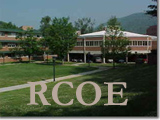|
Copyright 2006, |
|||||||||||||
|
Artifact # 5 |
Theme Unit-Folktales
Language Charts Concept Maps
Context: As
a part of my sequence of study for the Master of Arts in Reading Instruction,
I took Advanced Study of Children’s Literature, taught by Dr.
Beth Frye. The purpose of the
created theme unit was to gain an understanding of how to plan around a
central theme and incorporate individual, pair/group, and whole class
activities beginning with a launch activity and ending with a culminating
activity. When I began to think about
planning this lesson, I knew that I wanted to work with a theme that lent
itself to teaching folktales. While
taking the class, I developed a theme unit centered on the four natural
elements, earth, air, wind, and fire.
Through this integrated Four Natural Elements of Life theme unit, I
wanted students to begin their study of the four natural elements by talking
how ancient peoples were more closely related to the four elements because of
necessity and that modern convenience have removed us from direct contact
with earth, air, water, and air. Due
to this removal from the elements, we have a tendency to abuse them and take
them for granted and I wanted students to gain a respect for the elements as
a by-product of the theme study. When
planning the Four Natural Elements of Life theme unit study, I wanted
students to read a variety of folktales that relate specifically with one of
the four elements. In addition, I
wanted student s to have the opportunity to compare similar folktales across
cultures, like the flood story about the element, water. I also wanted to create a format for writing,
while learning about the four elements.
I decided the best way for students to creatively translate their
learning about the elements into writing was with a poetry format as
student’s individual activity. To
launch the lesson, I decided to help students understand the origins of the
words earth, air, water, and fire by giving them a historical perspective of
the human-element interaction.
Students will then look up the etymologies/word roots and synonyms for
the four elements. The purpose for beginning
the theme study with this activity is to make other word connections and
deepen student’s understanding of the four elements so they may better
apply their word knowledge when reading the folktales. As a pair or small group, students will
read ten different folktales representing all of the elements. With a provided folktale web students will
then complete a graphic organizer about the folktales they read, indicating
origins of the folktale and the type of folktale using proof from the
story. After modeling how to complete
a language chart using the element, water, students will be divided into two
groups to complete language charts about fire and water from around the
world. By completing the language chart,
students will be asked to find the commonalities and differences among the
stories related to their specific topic.
Students will then present their completed language chart to the other
group. Finally, as a culminating
activity I would create an opportunity for students to share their created
poems about the four elements, by having a “coffee house
reading,” where invitations will be created to invite parents,
refreshments will be provided and we will play music from the area in which
the folktales originated. Alignment Standard A: Instructional Expertise When
selecting The Four Elements as a theme study, I used a variety of materials
across different genres and reading levels to meet the needs of an all
learners. The beauty of a theme study
is that ideas are gathered on the same topic, but materials are different
enough to reach all learners, while supporting the discussion of the
“big idea.” Standard B: Knowledge of Learner The
Four Element Theme study unit I designed is in effort to deliver responsive instruction
while reaching all learners, including those with exceptionalities. I modified the language charts based on the
reading level of the folk tales, therefore demonstrating my ability to
differentiate through activities and materials while studying a common theme. Standard D: Content Knowledge This
theme unit was developed in conjunction with reading current educational
research and educational practices.
The Four Natural Elements theme unit demonstrates my ability to
approach the teaching of reading from various angles and across
disciplines. In addition, this theme
unit demonstrates my depth and breadth of content knowledge and skills |
||||||||||||


